You’re not showing up on Google Maps. Your competitors are. Every day, customers search for businesses like yours—”plumber near me,” “best Italian restaurant in [your city],” “emergency electrician [neighborhood]”—and they find everyone except you.
Here’s the truth nobody tells you: 46% of all Google searches have local intent.
Nearly half.
That’s millions of potential customers searching for exactly what you offer, right in your area, every single day. But if you’re not creating the right content for local SEO, you’re invisible.
The good news?
You don’t need a massive budget or an SEO PhD.
You need the right strategy.
This guide breaks down exactly how to create content that actually ranks in local search—the kind that gets you found when it matters most.
TL;DR: Your Quick-Win Playbook
Here’s what works right now for local business content:
The Foundation:
- Optimize your Google Business Profile completely—it’s the #1 local ranking factor
- Get fresh reviews consistently—review recency matters more than ever in 2025
- Create location-specific content that answers real customer questions
- Target local keywords with search intent (“emergency AC repair Miami,” not just “AC repair”)
What to Create:
- Service area pages for each location you serve
- Local landing pages optimized with city-specific content
- Hyperlocal blog content addressing neighborhood-level problems
- Customer testimonials and case studies from local clients
- FAQ pages answering “People Also Ask” questions with local context
The Reality Check:
- 78% of local mobile searches lead to purchases within 24 hours
- 40% of local SEO campaigns deliver 500%+ ROI
- It takes 3-6 months to see meaningful results
- Content alone won’t cut it—you need technical optimization, NAP consistency, and schema markup too
Bottom line: Create helpful, location-specific content consistently. Answer real questions. Make it easy for Google (and customers) to understand what you do and where you serve. The businesses that show up in local search aren’t lucky—they’re strategic.





Let’s Make Your Business the Talk of the Town
Stand out in local search, earn 5-star reviews, and bring consistent traffic to your door. It starts with a powerful Local SEO strategy.
Why This Changes Everything for Your Bottom Line
Let me be blunt: if your business serves a local area and you’re not investing in local SEO content strategy, you’re bleeding money.
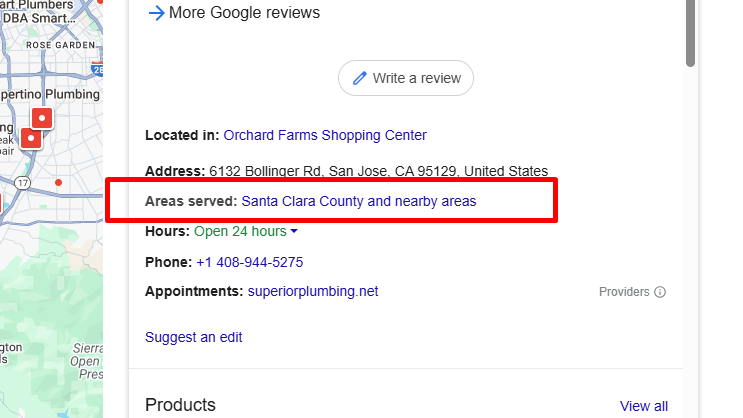
98% of consumers used the internet to find local business information in 2022, up from 90% just three years earlier. 28% of local searches result in a purchase. 88% of consumers who conduct a local search on their smartphone visit or call a store within a day.
Think about what that means for your business.
Every single day, qualified buyers are actively searching for what you offer. They have credit cards in hand. They’re ready to buy. And if you’re not showing up in those searches, your competitors are taking that revenue.
Here’s the ROI that matters:
40% of local SEO campaigns achieve an ROI of 500% or more. Not 50%. Five hundred percent. That means for every dollar you invest in creating the right local content, you could see five dollars back—or more. Local and organic search has a 22% session share and delivers the highest ROI with the most page views per session compared to any other marketing channel.
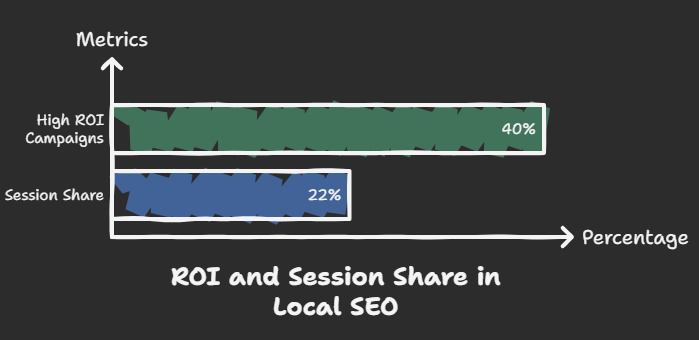
But here’s what separates winners from everyone else: consistency. The businesses dominating local search aren’t creating content once and hoping for magic.
They’re building systematic local SEO service strategies that compound over time. They understand that content optimization for local SEO isn’t a project—it’s a practice.
The question isn’t whether local content marketing works. The data proves it does. The question is: are you doing it right?
The Local Search Reality: What Google Actually Wants
Forget everything you think you know about SEO. Local search operates on different rules.
Google’s local algorithm prioritizes three core factors: Relevance (does your business match what people search for?), Distance (how close are you to the searcher?), and Prominence (how well-known and trusted is your business?).
You can’t change your physical location. But you absolutely can control relevance and prominence through content. And that’s where most businesses fail.
Read also: Latest Google Maps Ranking Factors
The Content Types That Actually Rank
Google doesn’t care about your generic “About Us” page. It cares about whether you can answer specific local questions better than anyone else. Here’s what works:
1. Local Landing Pages That Convert
Every service area you cover needs its own optimized page. Not thin, duplicate content—substantive pages with:
- Specific neighborhood or city information
- Local keywords naturally integrated
- Unique details about serving that area
- Local schema markup
- Real customer testimonials from that location
Example: A roofing contractor shouldn’t have one page saying “We serve Boston and surrounding areas.” They need separate, robust pages for “Roof Repair in Beacon Hill,” “Emergency Roofing Services in Cambridge,” and “Commercial Roofing in Somerville”—each with 500+ words of unique, helpful content.
2. Service Area Pages That Dominate
Different from location pages, these focus on what you do in specific places. Think “Emergency Plumbing [City Name]” or “24-Hour HVAC Repair [Neighborhood].”
These pages need to hit hard with:
- Clear service descriptions with local context
- Pricing information (if applicable)
- Service radius details
- Emergency contact options
- Local project photos
- Area-specific testimonials
A pest control company crushing it might have “Termite Inspection Services in Downtown Seattle” as one page and “Residential Pest Control Queen Anne Neighborhood” as another. Both serve Seattle, but they target different search intents.
3. Hyperlocal Blog Content
This is where you separate yourself from national chains. Write about:
- Local events affecting your service (“How Miami Hurricane Season Impacts Your Roof”)
- Neighborhood-specific problems (“Why Homes in [Area] Need Specialized Foundation Work”)
- City regulations (“New Building Codes in [City]: What Homeowners Need to Know”)
- Local customer success stories
- Seasonal local issues
A landscaping company in Phoenix shouldn’t write generic “Summer Lawn Care Tips.” They should write “How to Keep Your Scottsdale Lawn Alive During 115-Degree Heat Waves.” That’s hyperlocal. That’s valuable. That’s what ranks.
4. Location-Based FAQ Content
Answer the exact questions your local customers ask. Use tools like Google’s “People Also Ask” feature and your own customer service data.
For a dental practice: “Does [Your Practice Name] accept Medicaid in [City]?” “What’s the cost of teeth whitening in [Area]?” “Best emergency dentist near [Landmark]?”
Each answer should be comprehensive (150-300 words minimum) and include local context where relevant.
The Technical Foundation Nobody Tells You About
Creating great local content means nothing if the technical foundation is broken. Here’s what you need:
a). Google Business Profile
Your Google Business Profile category is the number one ranking factor for your Google Search and Maps business listing. Not “important.” Number one.
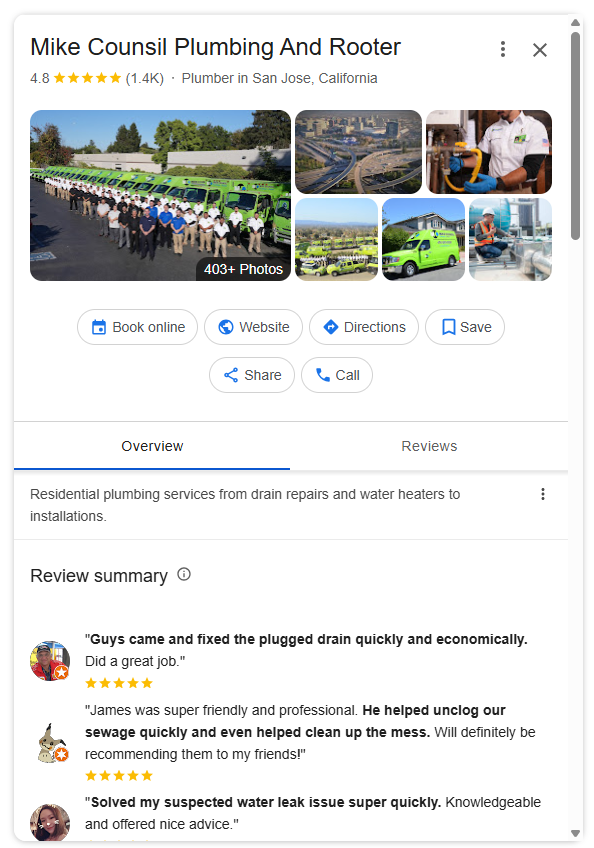
Complete every single section:
- Accurate business name, address, phone number (NAP consistency)
- Correct categories (primary + relevant secondary)
- Business hours (including holiday hours)
- Service areas clearly defined
- High-quality photos (exterior, interior, team, work samples)
- Regular posts (at least weekly)
- Complete attributes relevant to your business
Then comes the non-negotiable: fresh reviews. Review recency is the most underrated local ranking factor in 2025. If you’re not getting new reviews consistently, your competitors will quickly outrank you.
Don’t blast out review requests every six months. Build a systematic process where satisfied customers are asked for reviews within days of service. Make it part of your daily operations.
b). NAP Consistency Across the Web
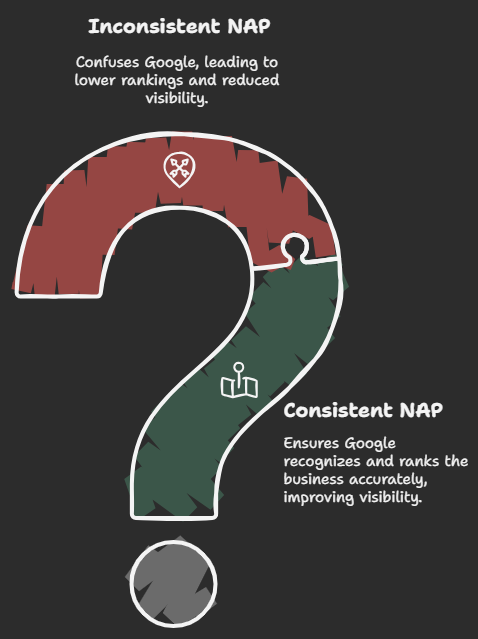
Your business name, address, and phone number must be identical everywhere it appears online.
Everywhere.
Google Business Profile, your website footer, Facebook, Yelp, industry directories—even that random listing you forgot about from 2018.
Inconsistent NAP data confuses Google and tanks your rankings.
If you have “Joe’s Plumbing Inc.” on your website but “Joe’s Plumbing” on your Google Business Profile, that’s a problem.
Fix it.
c). Schema Markup
Schema markup is code that helps search engines understand your content. It’s not visible to users, but it’s critical for local search.
Implement:
- LocalBusiness schema on your homepage
- Service schema for each service you offer
- Review schema to show star ratings in search results
- FAQ schema for your question-and-answer content
This structured data helps Google surface your information in AI Overviews, featured snippets, and rich results—giving you more visibility than a basic listing.
Read also: How to Use Schema Markup for Local SEO (Examples Included)
Your Local Keyword Strategy: Stop Guessing, Start Winning
Most businesses fail at local keywords because they think too broadly. They target “roofing services” when they should target “emergency roof leak repair Miami Beach” or “metal roof installation Coral Gables.”
How to Find Local Keywords That Convert
1. Start with Google itself:
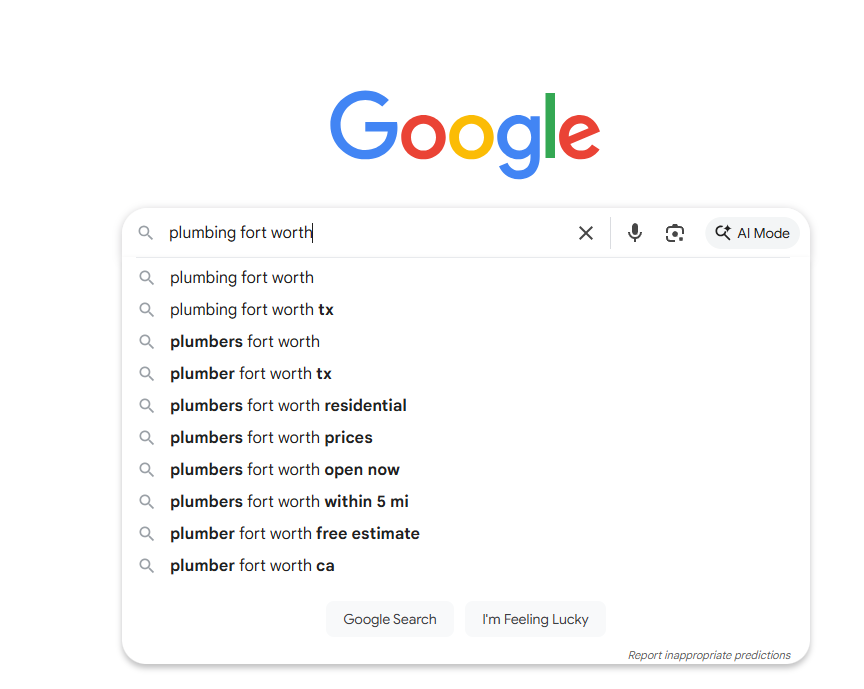
- Type your service + your city into Google
- Look at autocomplete suggestions
- Check “People Also Ask” questions
- Study the “Related Searches” at the bottom
- Analyze what your ranking competitors target
2. Think like your customer
Your customer doesn’t search “HVAC maintenance solutions.” They search “why is my AC blowing hot air Jacksonville” or “best AC company near me for same-day repair.”
Capture urgent, specific, local intent:
- Emergency + service + location
- Best + service + neighborhood
- Service + near [landmark]
- Service + location + “open now”
- Service + location + “same day”
3. Layer in local modifiers:
- City names
- Neighborhood names
- Zip codes
- Nearby landmarks (“plumber near Wrigley Field”)
- “Near me” variations
Content Optimization: The Formula That Works
Once you have your local keywords, here’s how to optimize:
Title Tag: [Primary Service] in [Specific Location] | [Your Business Name] Example: “Emergency Plumber in Capitol Hill Denver | Mile High Plumbing”
H1 Heading: Should match or closely mirror your title tag
First 100 Words: Include your target keyword naturally, establish location, preview what the page covers
Throughout Content:
- Use the exact local keyword 2-3 times
- Include variations (LSI keywords) naturally
- Answer specific local questions
- Include local landmarks, neighborhoods, or context
- Add customer testimonials mentioning the location
Meta Description: Compelling 150-160 characters with location and clear value proposition. This is your ad copy in search results.
What Local SEO Content Looks Like (Real Examples)
Let’s break down what actually works versus what wastes time.
Restaurant Example:
Bad: Generic “About Us” page saying “We serve the best Italian food in the area.”
Good: Individual pages for:
- “Authentic Italian Restaurant in Little Italy Baltimore” (neighborhood page)
- “Private Dining Rooms Federal Hill” (service + location)
- Blog post: “Best Restaurants Near Camden Yards for Pre-Game Dinner”
- FAQ: “Does [Restaurant Name] Take Reservations in Baltimore?”
The good version targets specific search intent, uses precise local keywords, and provides actual value.
Contractor Example:
Bad: One “Services” page listing everything you do, nowhere specifying where.
Good: Separate, detailed pages:
- “Kitchen Remodeling Brookline MA” (service + city page)
- “Bathroom Renovation Services Newton” (service + adjacent city)
- “Custom Home Building Wellesley” (premium service + affluent area)
- Blog: “2025 Building Permit Requirements for Brookline Home Renovations”
- Case study: “Historic Home Renovation in Boston’s South End”
Each page has 800-1,200 words of unique content addressing specific local concerns.
Service Business Example:
Bad: Homepage trying to rank for everything, everywhere.
Good: Strategic structure:
- Homepage: Brand overview, core service areas
- Service pages: “Emergency HVAC Repair [City],” “AC Installation [City],” “Furnace Maintenance [City]”
- Location pages: Dedicated pages for each major service area
- Blog covering local topics: “How Dallas Summer Heat Affects Your AC System”
- Local link building: Partnerships with local suppliers, business associations
The pattern?
Specificity wins. Generic content loses.
The Local Content Creation Process That Scales
Here’s your step-by-step system:
Month 1: Foundation
- Audit and optimize your Google Business Profile completely (use this free tool)
- Ensure NAP consistency across all platforms
- Create core service pages (one per major service)
- Implement basic schema markup
- Set up systematic review collection
Months 2-3: Local Landing Pages
- Create dedicated pages for your top 3-5 service areas
- Write 800+ words per page with unique local content
- Optimize with local keywords and schema
- Add location-specific testimonials and photos
- Build internal links from homepage and service pages
Months 4-6: Content Expansion
- Launch local blog with 2-4 posts per month
- Answer “People Also Ask” questions with FAQ content
- Create neighborhood-specific service pages
- Develop case studies from local projects
- Continue review generation (aim for 2-4 new reviews monthly)
Ongoing: Optimization and Scaling
- Update existing content quarterly
- Add new local landing pages for expanding service areas
- Refresh photos and testimonials
- Monitor Google Search Console for ranking opportunities
- Build local backlinks through partnerships and PR
The Mistakes That Kill Local Rankings
I’ve seen these torpedo otherwise solid strategies:
1. Duplicate Content Across Locations
Don’t just copy-paste the same content and swap city names. Google sees through that. Each location page needs 70%+ unique content.
2. Ignoring Review Management
Getting reviews once isn’t enough. The moment you stop getting new reviews, you’re going to see your local rankings start to slip. Consistent review velocity matters more than total review count.
3. Keyword Stuffing City Names
“We serve Phoenix, Scottsdale, Mesa, Tempe, Chandler, Gilbert…” on every page looks spammy. Create separate pages or naturally mention service areas.
4. No Internal Linking Strategy
Your location pages should link to relevant service pages. Service pages should link to location pages. Blog posts should link to both. Help Google understand your site structure.
5. Neglecting Mobile Experience
64% of combined data traffic worldwide comes from mobile devices. If your site is slow or hard to use on phones, you’re done. Fast-loading, mobile-optimized content isn’t optional.
6. Creating Content Without Search Intent
Writing “10 Reasons to Choose Us” won’t rank. Writing “Emergency Water Damage Restoration in [City]: What to Do in the First 24 Hours” will. Match content to what people actually search.
What Results Actually Look Like
Let’s set realistic expectations. If someone promises you top rankings in 30 days, run.
Positive ROI from local SEO campaigns typically happens in about 6 to 12 months. Peak results usually appear in the second or third year.
First 90 Days:
- Content gets indexed
- Google Business Profile becomes fully optimized
- Initial review momentum builds
- You might see some rankings for lower-competition terms
Months 4-6:
- Rankings improve for your primary local keywords
- You start appearing in the Local Pack for some searches
- Website traffic increases
- Phone calls and direction requests climb
Months 7-12:
- Compound effects kick in
- Multiple pages ranking for various local terms
- Consistent Local Pack appearances
- Significant increases in qualified leads
Year 2+:
- Market dominance in your service area
- Ranking for most relevant local searches
- Strong review profile pushing competitors down
- Lower customer acquisition costs than paid advertising
This is why professional local SEO services focus on long-term strategy, not quick tricks. The businesses winning local search treated it like a marathon, not a sprint.
Your Local SEO Content Action Plan: What to Do This Week
Stop overthinking. Start executing.
This Week:
- Claim and completely fill out your Google Business Profile (2 hours)
- Audit your NAP consistency across top 10 platforms where you’re listed (1 hour)
- Identify your top 5 local keywords using Google autocomplete and competitor analysis (1 hour)
- Create or optimize one service + location page with 800+ words (3 hours)
- Set up a review request process for your team to implement immediately (30 minutes)
This Month:
- Complete service pages for all major offerings
- Build out your top 3-5 location pages
- Implement schema markup on key pages
- Generate 5-10 new reviews
- Publish 2 local blog posts
Next 90 Days:
- Expand to 10+ location/service pages
- Launch consistent blog publishing (2-4 posts monthly)
- Build relationships with local businesses for backlinks
- Create FAQ section answering top customer questions
- Maintain review generation (aim for 2-4 reviews per month minimum)
The Bottom Line: Content Is Your Competitive Advantage
Local search isn’t complicated. But it does require commitment.
Your competitors are creating content right now. They’re optimizing their Google Business Profiles. They’re building location-specific pages. They’re showing up when your customers search.
The question is simple: Are you going to let them keep taking your customers? Or are you going to build a local content marketing strategy that puts you in front of every qualified buyer in your service area?
The businesses crushing local search didn’t get lucky. They got strategic. They understood that creating content for local SEO isn’t about gaming Google—it’s about genuinely helping local customers find solutions to their problems.
And here’s the truth nobody mentions: once you rank, it’s easier to stay ranked than it was to get there. The compound effects of established content, consistent reviews, and strong local signals create momentum that’s hard for competitors to overcome.
That’s your moat. That’s your defensible competitive advantage.
Ready to Dominate Local Search?
You have two options:
Option 1: Take everything in this guide and execute it yourself. It works—if you commit to doing it consistently for 6-12 months.
Option 2: Work with experts who’ve done this hundreds of times. Who understand the technical nuances. Who know what works in your industry and your market. Who can compress the timeline from “eventually” to “in the next quarter.”
At TrueHost, we specialize in building comprehensive local SEO strategies that get businesses found in their service areas. We handle the technical foundation, content creation, review generation, and ongoing optimization—so you can focus on running your business.
Want to see where you stand? We’ll audit your current local search presence, identify exactly what’s holding you back, and show you the fastest path to ranking in your market.
The customers are searching. Make sure they find you.
Time investment for this strategy: 5-10 hours per month for DIY execution, or partner with specialists for faster results. Expected ROI timeline: 6-12 months to profitability, with peak results in years 2-3. Success rate: 40% of local SEO campaigns deliver 500%+ ROI.
Read also: